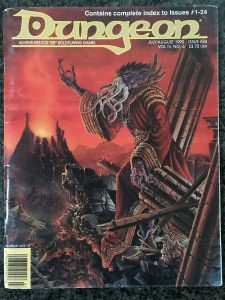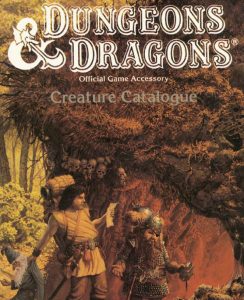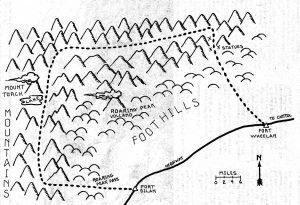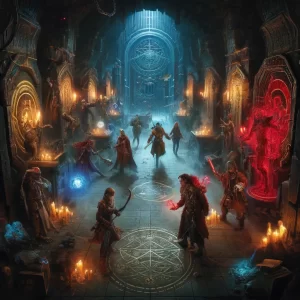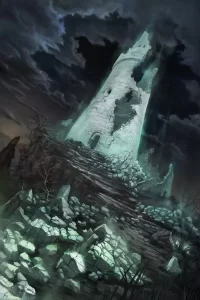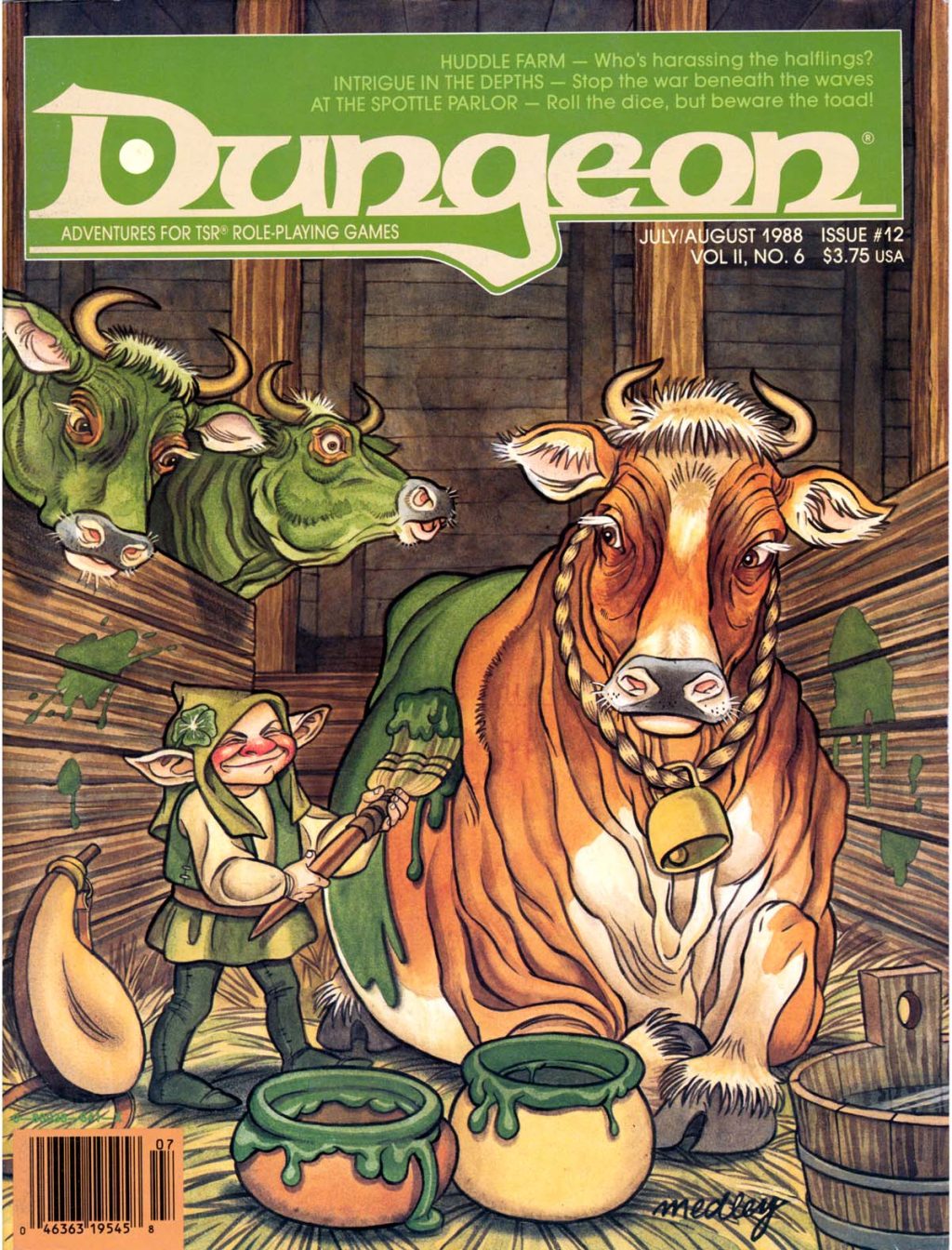
Imagine a world where the clash of swords echoes through ancient ruins, where the flicker of torchlight reveals secrets buried in stone, and where cunning adventurers defy the odds to claim treasures from the jaws of monstrous foes. This is the realm of high fantasy adventuring, a place where the ordinary bends to the extraordinary, and every shadowed corner hides a tale waiting to be told. For those who crave such escapades, Dungeon Adventures magazine offers a portal into this thrilling universe. Published as a companion to the more widely known Dragon Magazine, Dungeon Adventures carves out its own niche by delivering not just stories or gaming tips, but fully fleshed-out modules -- ready-to-play scenarios that plunge readers straight into the heart of Dungeons & Dragons (D&D) and Advanced Dungeons & Dragons (AD&D) action. The issue at hand, Volume II, Number 6, marks the end of the magazine's second year, and it's a testament to its growing legacy as a treasure trove for game masters and players alike. Within its pages lie five distinct adventures, an index of past exploits, and a glimpse into the vibrant community that fuels this fantastical endeavor. Let's delve into this issue and uncover why Dungeon Adventures is a must-read for anyone eager to roll the dice and step into the unknown.
The magazine opens with a promise of action-packed storytelling, a vow fulfilled across its 68 pages. It's not just a collection of ideas or vague inspirations -- it's a toolkit for adventure. Each module is a self-contained journey, meticulously crafted with maps, character stats, and narrative hooks to ignite the imagination. The first of these, "Light of Lost Souls" by Nigel D. Findley, sets a haunting tone. Picture this: a storm-lashed coast, a crumbling lighthouse perched on a rocky headland, and a party of adventurers seeking shelter in a shallow cave. As night falls, the spirit of Danelon, a guilt-ridden lighthouse keeper turned haunt, emerges to possess one of the group. His obsession? To light the beacon one last time, fifty years after his drunken negligence doomed the smuggling ship Barracuda. But the tale twists darker still -- the crew, now vengeful huecuvas, rise from the silt-choked bay to exact revenge. This isn't a mere ghost story; it's a tense, horror-infused siege where the players must navigate possession, undead fury, and a crumbling structure battered by wind and rain. Findley's knack for blending atmospheric dread with tactical challenges makes this a standout, perfect for 3-6 characters of 2nd to 4th level who aren't afraid to face the restless dead.
Next up is "Scepter of the Underworld" by James A. Jacobs, a solo adventure that thrusts the reader into the boots of Jan Daystar, a 12th-level human fighter. Imagine waking to a raven dropping a ruby ring at your feet, only to find yourself teleported into a stone chamber by Alaznist, an arch-mage with a mission. Your task? Retrieve the Scepter of the Underworld from a derelict temple teeming with peril. This isn't a group effort -- it's a lone warrior's odyssey through a maze of choices, narrated in a choose-your-own-path style across numbered paragraphs. You'll face a stone golem that shrugs off blows, an ettin swinging twin clubs, and a beholder-like gas spore primed to explode. The module's strength lies in its immediacy -- no need for a game master or fellow players, just you, a pencil, and a thirst for glory. Jacobs, a high school sophomore when he penned this, infuses it with youthful energy and a love for horror, making it a gripping solo plunge into the abyss. It's a rare treat in Dungeon Adventures, catering to those moments when you want to adventure alone, testing your wits against a gauntlet of foes.
Then there's "At the Spottle Parlor" by Rick Swan, a lighter yet no less intriguing tale for 4-11 D&D characters of 1st to 3rd level. Picture a roadside tavern where halflings, gnomes, and a surly dwarf gather to play spottle, a dice game with bizarre rules and even stranger players. The catch? A polymorphed giant toad named Bufo runs the show, and the stakes escalate from copper pieces to magical mischief. What starts as a friendly wager spirals into a chaotic brawl when Bufo's true nature is revealed, forcing the party to decide whether to flee, fight, or outwit the amphibian gambler. Swan's module shines with its quirky humor and vivid characters -- think of the one-eyed dwarf Gruftang rolling weighted dice or the halfling Sissy Smoothcheeks bluffing her way to victory. It's a refreshing detour from grim dungeons, offering a blend of social intrigue and unexpected combat that proves low-level adventures can be just as thrilling as epic quests.
The aquatic epic "Intrigue in the Depths" by Michael Lach and Rocco Pisto dives into a war beneath the waves, designed for 4-8 AD&D characters of 4th to 7th level. Imagine a coral palace where tritons battle sahuagin over a stolen artifact, the Circlet of the Deep. The players are drawn into this underwater conflict, navigating alliances with merfolk, thwarting sahuagin ambushes, and facing a sea hag's deadly lair. The module's maps detail a sprawling underwater realm, from triton outposts to a sahuagin stronghold bristling with traps. Lach and Pisto weave a complex narrative where diplomacy can be as vital as swordplay, and the ocean itself becomes both ally and adversary. The climax pits the party against Malec-Keth, a sahuagin priest whose dark rituals threaten to unleash chaos. It's a sprawling, immersive adventure that demands cunning and courage, rewarding players with the thrill of shaping a aquatic kingdom's fate.
Finally, "Huddle Farm" by Willie Walsh offers a rustic mystery for 4-7 AD&D characters of 1st to 4th level. Envision a halfling family beset by sabotage -- a burned barn, trampled fields, and bickering twins -- all traced back to Micko O'Malley, a vengeful leprechaun. The Huddles' expansion into Huddle Hill has disturbed Micko's lair, and now he's wreaking havoc with illusions and petty theft. The party must explore the farmstead, from its excavation site to a wine cellar missing its door, before confronting Micko in his treasure-strewn hideout beneath an ancient well. Walsh crafts a delightful blend of investigation and fantasy, with a cast of halfling characters -- superstitious Sherry, beleaguered Tom, and the feuding twins Sara and Mary -- who bring the setting to life. The leprechaun's antics, like trapping the family dog Nailer in a rickety cage, add a mischievous charm, making this a perfect low-stakes romp with a satisfying payoff.
Beyond the adventures, Dungeon Adventures offers more than just modules -- it's a window into the gaming world of 1988. An editorial by Barbara G. Young reflects on the magazine's second anniversary, revealing its unlikely success. Initially skeptical, Young marvels at how 12 issues have been filled with top-tier adventures, none penned by TSR's in-house designers. Instead, the magazine thrives on submissions from everyday gamers -- amateurs and budding writers who prove that passion trumps pedigree. An index spanning issues 1-12, tucked away on page 64, serves as a roadmap to past glories, letting readers hunt down favorites or match adventures to their party's level. There's also a nod to the 1988 GEN CON/ORIGINS Game Fair in Milwaukee, a massive gathering of players where Dungeon Adventures will shine. These extras tie the magazine to its community, showing it's not just a product but a living part of the D&D ecosystem.
The letters section, spanning pages 4 and 5, pulses with reader voices, offering a raw glimpse into what fuels this magazine. Some crave sprawling epics like Gary Gygax's Queen of the Spiders, while others champion shorter, clever tales that slot easily into ongoing campaigns. Solo adventures spark debate -- R. Christopher Coski relishes the chance to play alone, while Mark R. Shipley dismisses them as bookstore fodder. Preferences vary wildly, from Wolfgang Baur's plea for concise modules to Mark Shipley's love for dragon lairs and giant battles. This dialogue shapes the magazine's future, with Young promising a mix of long and short adventures, a steady drip of D&D modules, and a hunt for Oriental Adventures submissions. It's a reminder that Dungeon Adventures isn't a monolith -- it's a collaboration between creators and readers, evolving with every issue.
Visually, the magazine is a feast for the imagination. Bob Giadrosich's artwork for "Light of Lost Souls" captures the eerie isolation of the lighthouse, while Richard Bennett's illustrations in "Scepter of the Underworld" plunge you into Jan Daystar's perilous quest. Diesel's cartography, from the silted Ravenglass Bay to the Huddle Farm excavation, grounds each story in a tangible world. A page of map symbols -- doors, pits, staircases -- doubles as a Rosetta Stone for navigating these realms, ensuring players can chart their course with precision. Ads for Dragon Magazine subscriptions and upcoming D&D accessories, like The Principalities of Glantri and The Elves of Alfheim, tease a broader universe waiting to be explored. Even a quirky plug for Amazing Stories, a sci-fi magazine, hints at the eclectic tastes of TSR's readership.
What makes Dungeon Adventures compelling isn't just its content, but its immediacy. Unlike Dragon Magazine's broad strokes of lore and strategy, Dungeon delivers the raw material of adventure -- pre-built, playtested, and primed for action. It's the difference between reading about a dragon and facing one across a dungeon table. The variety in this issue alone -- from ghostly lighthouses to underwater wars, gambling toads to leprechaun lairs -- ensures there's something for every taste. Whether you're a game master seeking a quick session or a player itching to dive in solo, the magazine hands you the keys to a fantastical kingdom. The lack of a strict editorial filter, relying instead on fan submissions, infuses it with a wild, unpredictable energy -- a reflection of the chaotic creativity that defines tabletop role-playing.
As Young notes, the magazine's success defied expectations, proving that a module-only format could thrive. By February 27, 2025 -- the present day as I write this -- Dungeon Adventures' legacy endures in the annals of gaming history, a relic of a time when paper and pencil reigned supreme. Yet its appeal is timeless. The thrill of cracking open an issue, poring over maps, and plotting your next move transcends decades. It's a call to adventure that resonates whether you're a veteran of 1988's GEN CON or a newcomer rolling your first d20. So why read Dungeon Adventures? Because it's not just a magazine -- it's a gauntlet thrown down, daring you to step into the fray. Grab a copy, gather your party, and let the dice fall where they may. The greatest treasures await.
